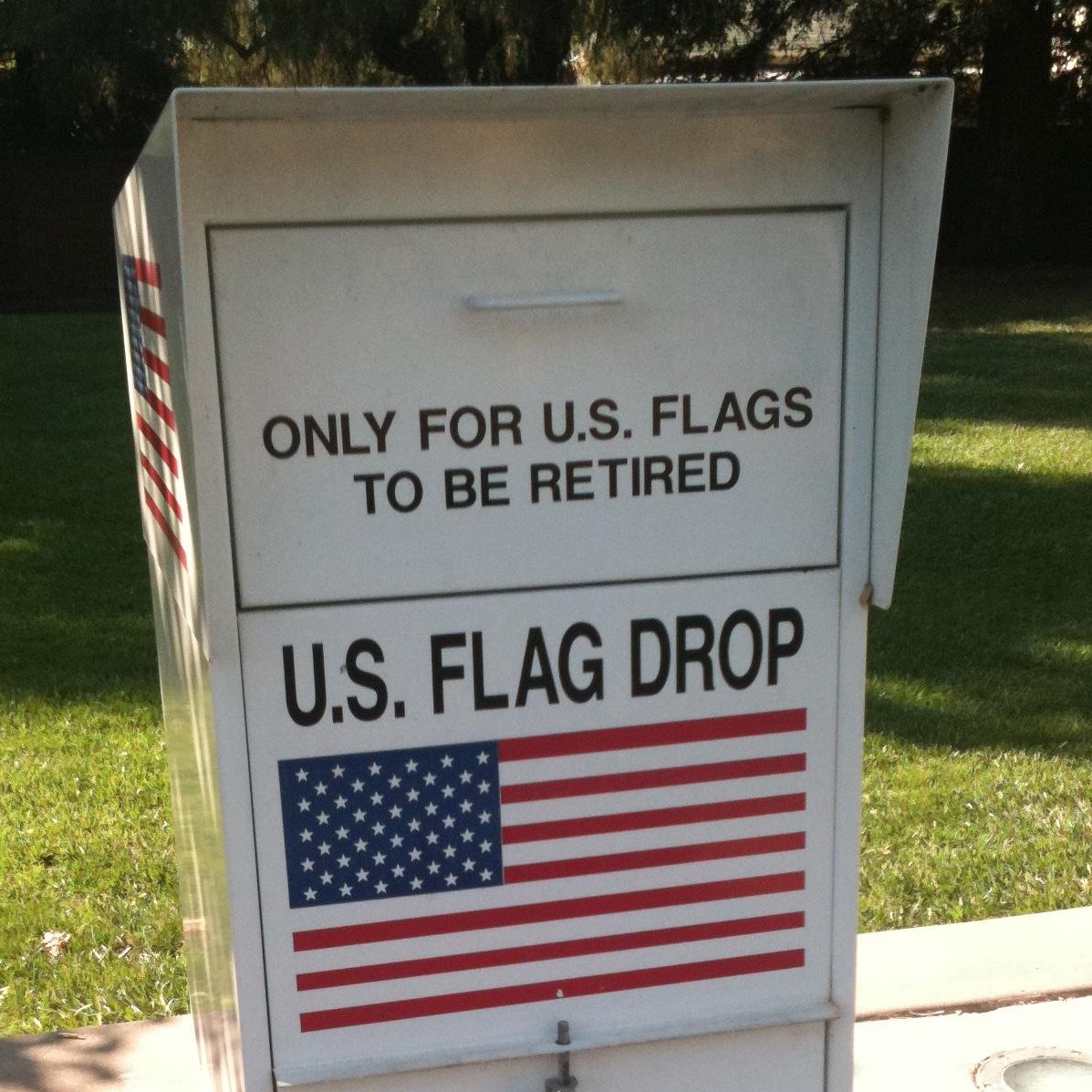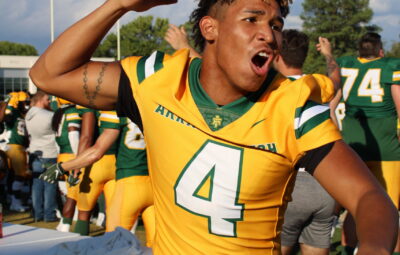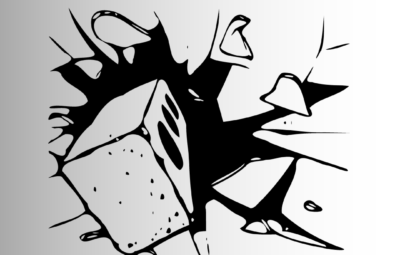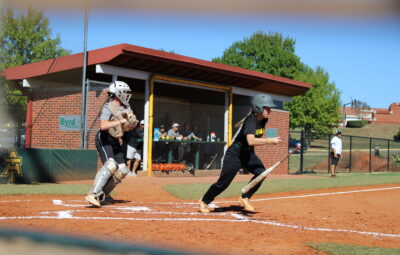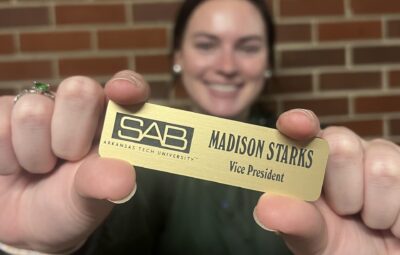The red and white bars hug every breeze in unison, dancing in patriotic majesty. They are held tightly by their near azure, star-filled crown, reassuring the free that their “banner yet waves.”
Until one day… things change.
The now pink and off-white bars beat one another mercilessly. The sun-worn canton struggles to maintain its regal dignity as its counterparts become writhing tentacles.
It was destined to happen. It always does. As long as the rains come, the winds blow, and the scorching sun shines, it always will.
This means the flag must fly no more.
According to the United States Flag Code, “The flag, when it is in such condition that it is no longer a fitting emblem for display, should be destroyed in a dignified way, preferably by burning.” (4 U.S. Code § 8 – Respect for flag) Often, local Veteran’s Affairs groups, Veterans of Foreign Wars, or Boy Scout troops will handle that disposal.
But what if the flags could live on? What if they could still serve a purpose?
ATU student Kim Wilson believes they can.
Wilson is a part of an organization known as “Stars For Our Troops,” a non-profit, 501(c)(3) charitable organization, started by Susan Wells. As Wells describes the origins, it started with her, “four flags, and a group of World War II veterans and their families in September of 2010.”
“On Memorial Day weekend in 2013, Reuters did an article about Stars for our Troops. I had been interviewed but hadn’t realized the scope of their communications,” Wells explained. “Sunday morning it broke; Monday night we had over 1,000 emails asking about stars, requesting stars for military shipments, ordering for veterans and wanting to participate.”
According to their website, “Stars For Our Troops” is “a group of patriotic volunteers who dedicate our time to giving the American flag a new purpose when the flags become tattered and faded.”
Wilson first read about the organization in June 2014, when she was working for the Federal Emergency Management Agency in Washington, D.C. Though originally from Arkansas, she knew what it was like to live in a military home in different areas, as her father was in the Air Force. She joined the organization and eventually brought it and its purpose to Arkansas. (She is still only one of two in the state.)
What new purpose does Wilson and others in her organization give the battered banners? She and her fellow volunteers carefully trim off the red and white stripes and send them to be retired. The canton (a.k.a. “the blue field” housing the stars), however, is cut into strips creating rows of stars. Each star is meticulously cut out of the canton framing the star with a border of a blue pentagon. Wilson then places the star in a small zip-closing plastic bag. The stars are then given to veterans or current service members to show they are remembered and appreciated.
These volunteers who cut the stars and distribute them call themselves, “Star Makers.” There are currently more than 250 Star Makers around the country, most prominently on the east coast. Their group is not an exclusive group; they will welcome newcomers gladly. Joining is as simple as signing up on their website (https://starsforourtroops.org/star-makers) and donating $15 to receive a starter kit.
Current members may gather their flags in any number of places. The eroded ensigns come from banks, office buildings, schools, car lots—any location where the flag is flown.
Wilson said she has a long-time friend in Oregon that sends her flags and will ask for stars from time to time. Wilson’s daughter works at the University of Oklahoma and helps give out the stars.
The group does have a couple of guidelines. The flags must be made in the USA, and the stars embroidered, not screen-printed. The stars are also not handed out at any political rally, campaign, or other political gathering of any kind.
Just as the military leaves no one behind, they also have a plan for the grommets. Earlier this year, the group sent “several” grommets to a company in Arizona that is melting them down to make a new bell for the USS Arizona Memorial. The current bell has become broken to the point of disrepair.
Pertaining to the Star Makers’ drive or purpose, Wilson said, “I think some people don’t understand.” The answer lies in the bag.
Along with the star, a small card is inserted into the bag. Each card reads the same, “I am part of our American flag that has flown over the USA. I can no longer fly. The sun and winds caused me to become tattered and torn. Please carry me as a reminder that You are not forgotten.”
For some soldiers that means so much. Some treat the stars as good luck charms. Some keep them in their left shirt pocket, over their heart. Some firemen have worn them inside their helmets as talismans. Some just accept them, and the star ends up lost in the black hole of a junk drawer.
“Sometimes you get good reactions—most of the time you get good reactions,” Wilson explained. “Once in a while, you’ll get a bad reaction.”
Retired Army National Guard Sgt. Walter Ray understands exactly what it feels like to feel forgotten and the joy that comes with simple recognition.
“In basic training when you first leave…. it’s four to eight weeks, and when first leaving home, you feel so alone,” Ray said.
He said that while he never felt alone on the battlefield during his tours of service, “A lot of guys felt isolated.”
Upon his return from his last deployment, he had the joy of being welcomed back into his hometown of Pocahontas with a parade and a key to the city, so different from the welcome many American vets got upon returning from Vietnam.
His feeling of being forgotten came after his retirement.
“When I first retired, I did [feel forgotten]. I was with them 30 something years. It felt like I had lost a member of the family. I felt like I was all alone. I went through a mourning process. I felt almost abandoned by the military. You are isolated because you have to adjust to civilian life.”
Ray agrees that sending out the stars or even something as simple as a card or letter can mean so much for a service member or veteran.
War after war, soldiers have been led by the flag. As Edgar Lee Masters described in his “Spoon River Anthology,” soldiers have followed and cheered the flag into rice fields, surrounded by “flies and poisonous things… deadly water, and the cruel heat, and the sickening, putrid food… And days of loathing and nights of fear to the hour of the charge through the steaming swamp, following the flag…”
For U.S. soldiers, the flag is a symbol of hope and a rally point. It stands for those men and women, boys and girls back home for whom they fight, who they trust will be behind them in sending supplies or at the least, in prayer.
“The honor of the flag must be upheld,” Masters wrote. That will happen when not only the flags but the vets are no longer forgotten, as well.
As one flag is taken down and replaced with another, so are soldiers. As one fades with age and into the civilian world, another bright, sharp newer soldier takes their place. Often veterans may feel that they have been seemingly forgotten and discarded as a tattered flag. For Wilson and her fellow Star Makers, that must stop.
For them, it stops now.

